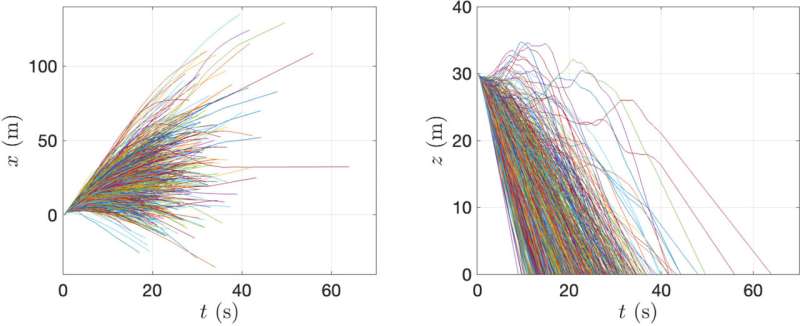This article has been reviewed according to Science X's editorial process and policies. Editors have highlighted the following attributes while ensuring the content's credibility:
fact-checked
trusted source
proofread
Understanding the deep relationship between plants and the wind

As Earth's climate continues to change, a plant's ability to adapt to its shifting environment is critical to its survival. Often, to stay alive a plant must move locations by releasing its seeds, but plants are rooted in the ground and cannot move themselves. Instead, they are dependent on animals or the wind to carry their seeds to a new location.
Playing an essential foundational role in an ecosystem, plants contribute to the well-being of human health by helping create resources like food and medicine. Therefore, to better understand how plants can maintain resiliency in the face of challenges like climate change, a team of researchers at the University of Missouri and Michigan State University recently collaborated to develop an innovative mathematical model that can provide fast and reliable predictions of how far wind can carry a plant's seeds.
"Once seeds are released from a plant, we wanted to know how far they can go because as wind conditions fluctuate, the seeds will be moved around differently as a result of various weights, sizes, and shapes," said Binbin Wang, an assistant professor in the Department of Civil and Environmental Engineering at the MU College of Engineering. "This model gives us a better idea of the probability of where a seed will land on the ground in different conditions depending on the seed type, the plant type, and the wind speed."
One advantage of the model is its ability to predict the probability of where seeds might eventually land on the ground when winds are turbulent, said Jeffrey Wood, an assistant professor in the School of Natural Resources at the MU College of Agriculture, Food and Natural Resources.
"Like eddies created by currents in a river, there are also eddies swirling around in the atmosphere, particularly in the lowest part closest to the Earth's surface," Wood said. "These atmospheric eddies, called turbulence, are chaotic, swirling movements that can transport gases and heat around in the atmosphere. They also move seeds through the air."
Changes in one part of the ecosystem can create a "snowball effect" on other parts. For instance, a loss in plant diversity can disrupt the fragile stability of the entire ecosystem and impact both human and animal populations. That's why understanding seed dispersal is important. Plants can only make this move once during their life—as a seed, said Lauren Sullivan, an assistant professor in the College of Natural Science at Michigan State University.
For example, if the winds are low, calm, and not turbulent when a plant is producing its seeds, the seeds might fall straight down and not spread anywhere, she said.
"Understanding how plants move as seeds year-round is critical for us to analyze how they'll be able to handle climate change," Sullivan said. "This movement is also important for how we can increase diversity in the ecosystem. As a biologist, instead of making assumptions about how plants move, we're now able to partner with researchers who can factor in aspects like aerodynamics and micro-meteorology. This innovative approach can help us develop accurate models that are simple enough to make good predictions in just a short amount of time."
The model, which makes predictions based on seed and plant type, plant height, and wind speed, can develop an entire year's worth of predictive data in just one or two days. It's similar to other models that Wang has created for predicting the spread of fish eggs in rivers, or the spread of virus-laden respiratory droplets in air.
As part of their future work, the team will develop educational programming for K-12 and college students. For example, they will provide opportunities for college students to explore how different disciplines, such as agriculture, biological sciences and engineering, can work together to solve different real-world problems.
"Modeling wind-driven seed dispersal using a coupled Lagrangian particle tracking and 1-D k-ɛ turbulence model," was published in Ecological Modelling.
More information: Binbin Wang et al, Modeling wind-driven seed dispersal using a coupled Lagrangian particle tracking and 1-D k-ɛ turbulence model, Ecological Modelling (2023). DOI: 10.1016/j.ecolmodel.2023.110503
Provided by University of Missouri

















